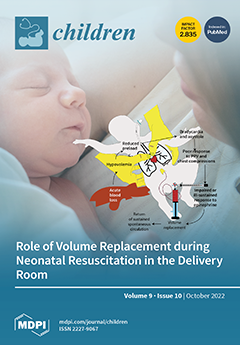Low and high birth weight (BW) are associated with obesity later in life; however, this association has not been extensively studied in African countries. This study determines the association between BW and body composition derived from deuterium oxide (D
2O) dilution in 6- to 8-year-old South African children (
n = 91; 40 boys, 51 girls). BW was recorded retrospectively from the children’s Road-to-Health cards. Weight and height were measured using standard procedures, and D
2O dilution was used to determine total body water and, subsequently, to determine body fat. Fatness was classified using the McCarthy centiles, set at 2nd, 85th, and 95th (underfat, overfat and obese). BW correlated with body composition measures, such as body weight (r = 0.23,
p = 0.03), height (r = 0.33,
p < 0.001), and fat free mass (FFM; r = 0.27,
p = 0.01). When multiple regression analysis was employed, BW significantly and positively associated with FFM (β = 0.24,
p = 0.013; 95% CI: 0.032; 0.441) and fat mass (β = 0.21,
p = 0.02, 95%CI: 0.001; 0.412) in girls and boys combined. A total of 13% of the children had a low BW, with 21% being overweight and 17% obese. More girls than boys were overweight and obese. Intervention strategies that promote healthy uterine growth for optimal BW are needed in order to curb the global obesity pandemic.
Full article






